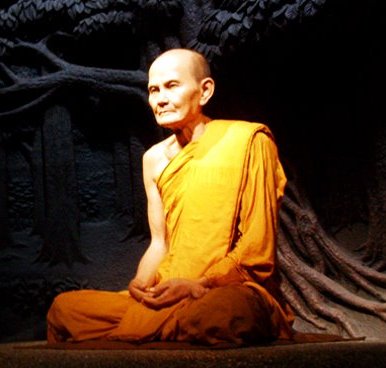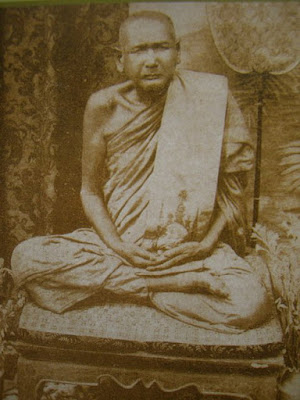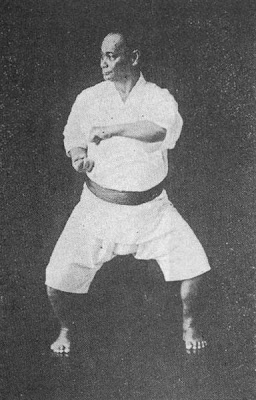
|
Lotus in the fire |
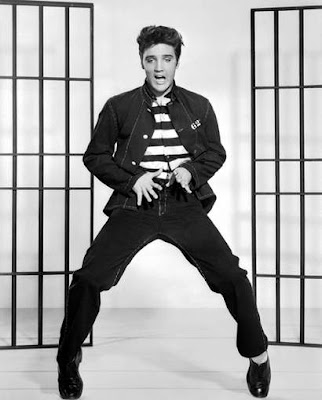 |
In November of last year I wrote about the difference between the hips being "in" and "out", my somewhat sloppy translation for the Japanese expressions "koshi ga haitteiru" and "koshi ga nuketeiru". Look at the two photographs above: Karateka Motobu Choki is demonstrating a kata, his hips are "in". The singer on the right, who goes by the name of "Elvis the pelvis" (not to be confused with the real Elvis in the center) is shaking his hips. In this position, they are "out". You can see the difference in balance between the two.
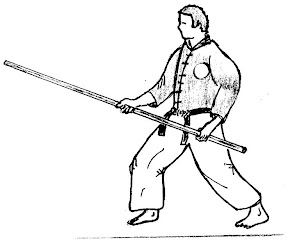 In most forms of Japanese martial arts, it is essential that the hips are "in". The only exception maybe is judo, as the fighters try to avoid being gripped by the opponent. One reason for this is balance. By moving the hips forward, the center of gravity stays low, giving stability to the physical posture.
The other alternative, having the hips "out" is also called "nige-koshi" in Japanese, which literally means "hips that try to escape". If you face your opponent with the hips "out", you are already on the defence.
In most forms of Japanese martial arts, it is essential that the hips are "in". The only exception maybe is judo, as the fighters try to avoid being gripped by the opponent. One reason for this is balance. By moving the hips forward, the center of gravity stays low, giving stability to the physical posture.
The other alternative, having the hips "out" is also called "nige-koshi" in Japanese, which literally means "hips that try to escape". If you face your opponent with the hips "out", you are already on the defence.
This is true not only for the physical aspect. With hips "out", your mind will be "out" as well. In the case of martial arts, when the hips "try to escape" your mind will try to escape as well and you are unable to face your opponent. In the case of zazen, with the hips "out", not only will your posture be unstable, but also your mind will not be in the present moment. You will be either sleeping, day-dreaming or thinking. Or meditating, maybe.

| This is Asashoryu, the speediest of the sumo wrestlers. Asashoryu and Hakuho are the two yokozuna, the fighest ranking sumo wrestlers. Both of them are Mongolians. |

|
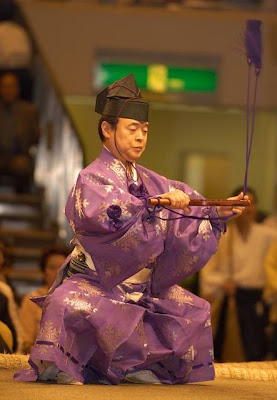
|
The gyoji, or referees, also need to have the hips "in". They almost move like noh dancers. Below you see the yokozuna with two assisting wrestlers and a gyoji during the entrance ceremony.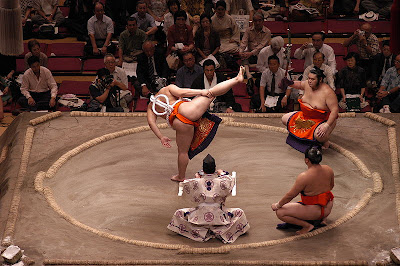
|
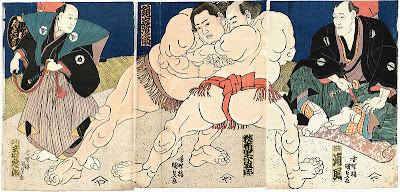
| But not only for sumo wrestlers the hips are important. For carrying water, a simple task performed by many people daily worldwide, you also need to have the hips "in". |

|
| These three ladies' posture looks just as stable as a sumo wrestler's. Again, it is thanks to their hips being "in". |

|
|
| Forget about the Zen garden. Watch the hips! |
Now let us look for some examples from professional meditators who should know the importance of the hips best. Look at some results of a quick search at Google Images for "meditating monks":

| Buddhist monks sit below the Bodhi-tree in Bodhgaya. Maybe they are tired from their pilgrimage? |
| Or maybe the way they sit is not so important for them? I see the same pattern everywhere: Hips "out", knees in the air, chin raised high... |
|

|
A portrait of the famous Buddhadasa Bhikkhu. Is his back bent because of his old age? Or was he told to sit like this from early childhood, like these young novices?

|

| Yes, it is boring! When does the bell finally ring? Is something wrong with the clock? |

|
 | Each of the Buddhist traditions has its own style. From the point of view of the other Asian Buddhist traditions, Japanese Buddhism is not really Buddhism, because the priests do not keep to the precepts very strictly. According to orthodox Buddhism, a monk who engages in sex will fall into hell. But I am married and I also drink alcohol sometimes. Although I never liked to eat fish or meat even as a kid, and was vegetarian when I became a monk in Japan, I was told that to refuse to eat an offering of fish or meat means to kill the good intention of the donor. To not eat meat means to kill, I was told. So I stopped being a vegetarian after ordaining as a Zen monk. From the viewpont of continental Buddhism, quite absurd. |
| On the other hand, as a monk from the Japanese tradition, I was surprised to see monks in Thailand taking naps in open daylight, or protecting the Mercedes Benzes in the monastery yard with their monks robes. Probably that is not a big problem, because it is not forbidden by the precepts. In Japanese Zen, on the other hand, the physical posture is more important than the letter of the precepts. This is the cause of many misunderstandings. | 
|

|
In Antaiji, I learned that mind and body are not separated. The mind manifests in the physical posture. To keep the physical posture, in turn you need presence of mind. Here at Antaiji, I do not sit and meditate. Rather, I just sit. This practice is called shikantaza in Japanese.
Someone might ask: How does this "shikantaza" differ from sitting in the commuter train on the way to work, or sitting in front of a TV set, or sitting on a park bench feeding the birds (or eyeing little girls?). When you say you "just sit", what more do you do than that?
The answer is of course: I do not do anything more, I simply do less. I just sit. Actually, what I am aiming at is not me doing some practice called shikantaza (just sitting). It is just sitting, without me or anything. I have to disappear in the sitting. Therefore it is very important how I sit. The hips need to be "in" for me to be in the sitting, and to be absorbed by the sitting.
Please do not tell me you are practicing shikantaza when you sit like this:
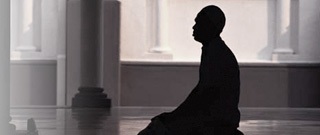
[Muho]
| <<< Previous chapter | Contents | Next chapter >>> |




